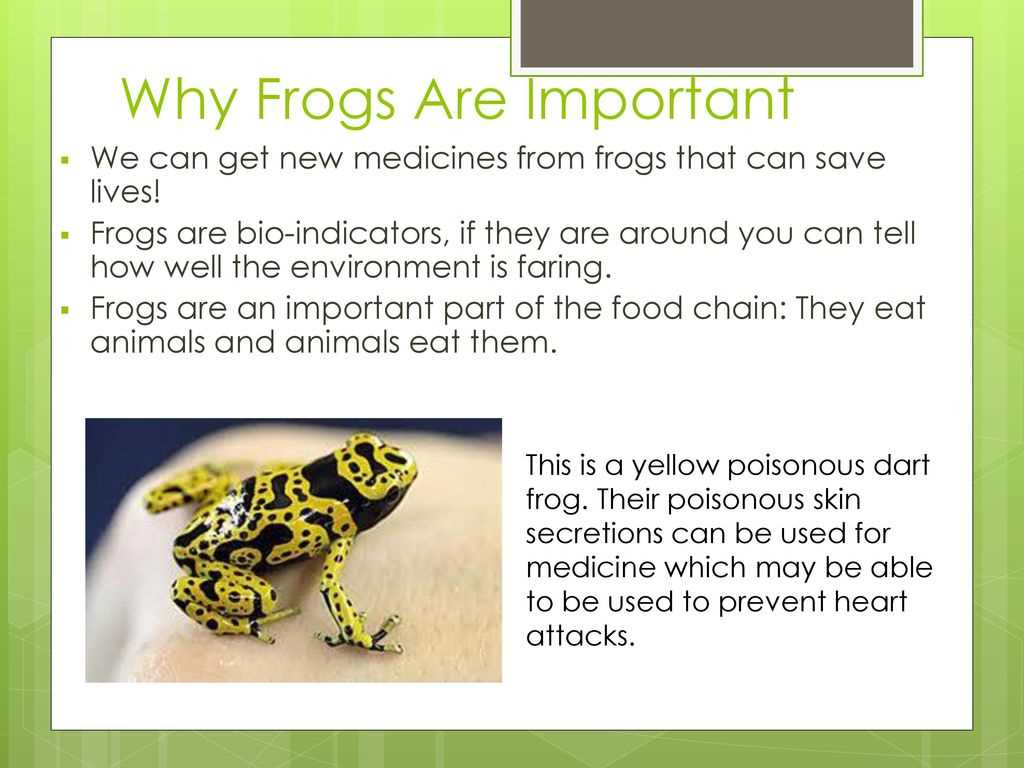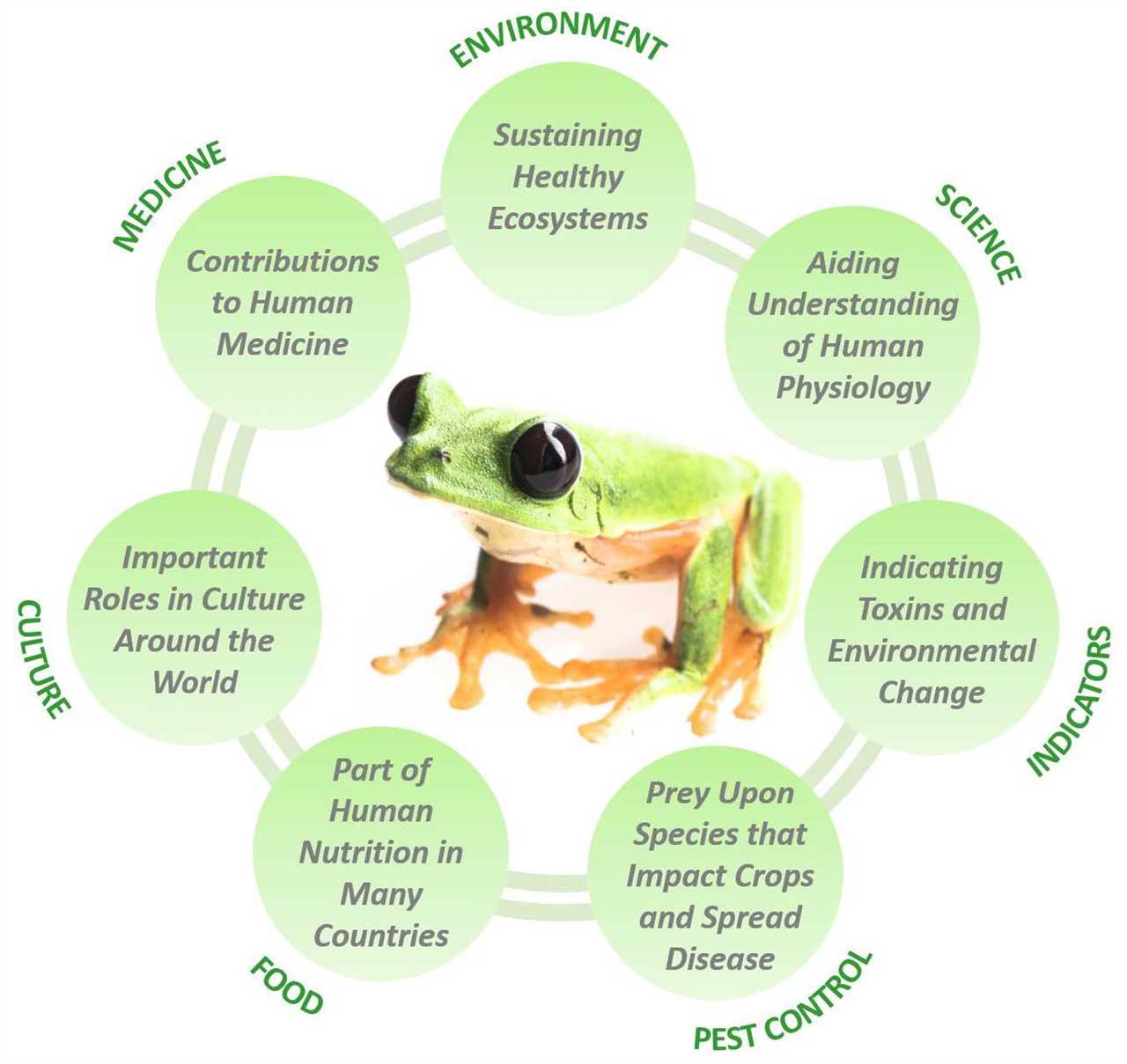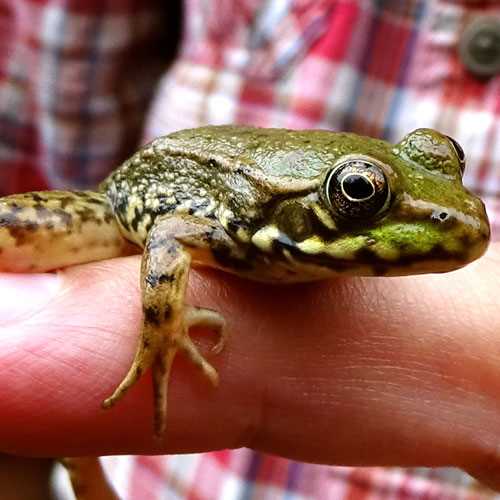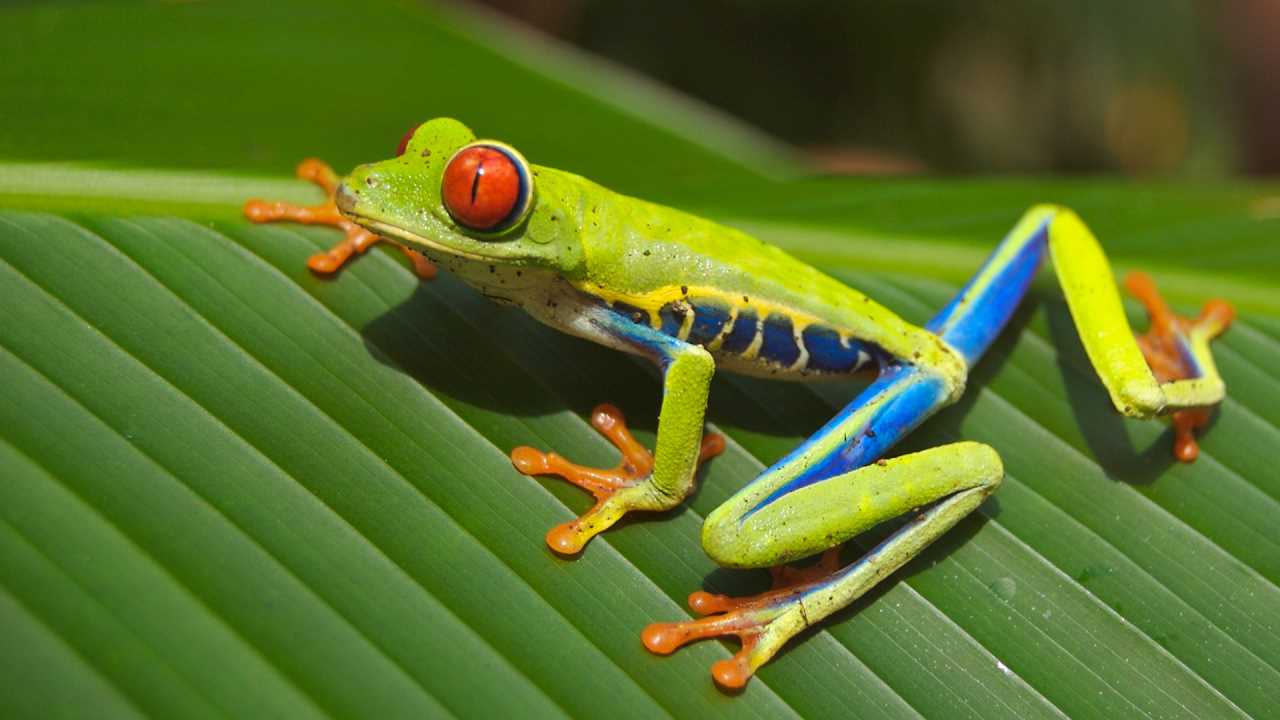Why are frogs important?
Furthermore, frogs serve as indicators of ecosystem health.
Being amphibians, frogs rely on both aquatic and terrestrial habitats, linking these two environments together. Their permeable skin makes them highly sensitive to changes in water quality, temperature, and pollution levels. Hence, if frog populations are thriving, it is a sign that the ecosystem is functioning well. Conversely, declines in frog populations can signal ecological disruptions or habitat degradation, alerting scientists and conservationists to potential problems that require immediate attention.
The Role of Frogs in Ecosystems and Conservation Efforts
One of the main reasons why frogs are important is their role as indicator species. Due to their permeable skin, they are highly sensitive to changes in their environment. This makes them excellent indicators of ecosystem health. If frog populations are declining or disappearing in a particular area, it may indicate that there are underlying issues such as pollution, habitat destruction, or climate change.
In addition to being indicators, frogs also have a significant ecological role in controlling insect populations. Many frog species are voracious insect eaters, and their consumption helps to regulate insect populations, preventing outbreaks that can have negative impacts on agriculture and human health.
Furthermore, frogs have a mutualistic relationship with plants. Some frog species depend on specific plants for shelter or breeding sites, while the plants benefit from the frogs’ presence by attracting insects for the frogs to eat. This mutualistic relationship helps to maintain the health and diversity of plant species.
Water conservation is another area where frogs are important. As amphibians, they rely on freshwater habitats for breeding and survival. By conserving and protecting water sources, we are safeguarding the survival of frog populations and maintaining the delicate balance of ecosystems.
Unfortunately, global frog populations are facing a decline due to various threats, including pollution and habitat loss. The loss of wetlands, deforestation, climate change, and the use of pesticides are all contributing factors to this decline. It is crucial to implement conservation efforts and establish amphibian sanctuaries to protect the remaining frog populations and restore their habitats.
Lastly, educating and engaging the public is essential for supporting frog conservation. By raising awareness about the importance of frogs in ecosystems and the threats they face, individuals can take action to protect these vital creatures. Teaching children about frogs and their significance at an early age can foster a sense of responsibility and inspire future generations to be conscious of the environment.
| Key Points |
|---|
| – Frogs are important indicator species, signaling the health of ecosystems. |
| – They help control insect populations, benefiting agriculture and human health. |
| – Frogs contribute to nutrient cycling, supporting the growth of vegetation. |
| – They have a mutualistic relationship with plants, maintaining plant diversity. |
| – Frogs are essential prey and predators, maintaining the balance of the food chain. |
| – Water conservation is crucial for protecting and preserving frog populations. |
| – Threats such as pollution and habitat loss are causing a decline in frog populations. |
| – Conservation efforts and education are necessary to save frogs and their habitats. |
The Importance of Frogs as Indicators of Ecosystem Health
Frogs play a crucial role in maintaining the health and balance of ecosystems around the world. They are often referred to as “indicator species” because their presence or absence can provide valuable information about the overall health of the environment.
One of the primary reasons why frogs are important indicators of ecosystem health is their sensitivity to environmental changes. As amphibians, they have permeable skin that allows them to absorb water and oxygen directly from their surroundings. This feature makes them extremely vulnerable to pollutants and changes in their habitat.
When frog populations start to decline or disappear from an area, it is often a strong indication that something is wrong with the ecosystem. This could be due to pollution, habitat destruction, or other environmental disturbances. By monitoring frog populations, scientists can gather valuable data about the state of the ecosystem and potential threats to other species.
Why are frogs important indicators?
1. Sensitivity to environmental changes: Frogs have a unique ability to absorb contaminants through their skin, making them highly susceptible to pollution. When frog populations decline, it is a clear indication that there are problems with the environment that need to be addressed.
2. Biodiversity and ecosystem health: Frogs are an essential part of the food chain and contribute to the overall ecosystem balance. Their decline can have cascading effects on other species and disrupt the natural balance of the ecosystem.
3. Habitat quality and conservation: By monitoring frog populations, scientists can assess the quality of the habitat and determine the effectiveness of conservation efforts. If frog populations are thriving, it generally indicates that the ecosystem is in good health and suitable for other species.
Conclusion
The Ecological Role of Frogs in Controlling Insect Populations
Frogs play a crucial ecological role in controlling insect populations, making them an important part of our ecosystems. Their ability to consume large quantities of insects helps to maintain balance in the ecosystem and prevent outbreaks of pests.
This predatory behavior helps to keep the populations of insects in check. By consuming large numbers of insects, frogs reduce the likelihood of pest outbreaks that can damage crops and spread diseases. They act as natural pest controllers, reducing the need for chemical pesticides that can have harmful effects on the environment.
Frogs also play an important role in maintaining the biodiversity of ecosystems. As predators, they help to regulate the populations of various insect species, preventing any one species from becoming dominant. This balance is essential for the overall health and stability of the ecosystem.
In addition to controlling insect populations, frogs also contribute to nutrient cycling in ecosystems. When they consume insects, they break down the organic material inside them, releasing nutrients back into the environment. These nutrients can then be used by plants and other organisms, creating a cycle of energy flow and nutrient recycling.
Overall, the role of frogs in controlling insect populations is crucial for maintaining the health and balance of ecosystems. Their predatory behavior helps to prevent pest outbreaks and reduce the need for chemical pesticides. By consuming insects, frogs also contribute to nutrient cycling and help to maintain biodiversity. This is why frogs are important and should be protected and conserved.
Why Frogs Are Key Players in Nutrient Cycling
Frogs play a crucial role in the process of nutrient cycling within ecosystems. Nutrient cycling refers to the movement and exchange of nutrients between living organisms and their environment. It is an essential process that ensures the availability of nutrients for plant growth and sustains the overall health of the ecosystem.
Frogs contribute to nutrient cycling through their feeding habits and their role as both predator and prey. As predators, frogs consume a variety of insects and other small invertebrates. This feeding behavior helps to control insect populations, preventing them from becoming overabundant and damaging plant life.
Frogs also contribute to nutrient cycling through their role as prey. When frogs are consumed by predators such as snakes or birds, the nutrients that were stored in their bodies are transferred to the predator. This transfer of nutrients allows for the movement of energy and essential elements within the ecosystem.
Furthermore, frogs can also indirectly affect nutrient cycling through their interactions with plants. Some species of frogs have a symbiotic relationship with certain plants. These frogs lay their eggs in or near water bodies where specific plants grow. The tadpoles, when they hatch, feed on algae, helping to control its growth. In return, the plants provide shelter and camouflage for the frogs, creating a mutually beneficial relationship.
The Mutual Benefit: Frogs and Plants
Frogs are important for the health and well-being of ecosystems, and one of their key roles is their mutual relationship with plants. This relationship benefits both frogs and plants in various ways.
Facilitating Plant Pollination
Frogs play a crucial role in plant pollination. As frogs move from one plant to another, they inadvertently transfer pollen, enabling the plants to reproduce. This process is especially important for plants that rely on specific frog species for pollination.
Some frogs have specialized adaptations that aid in plant pollination. For instance, the sticky pads on the feet of tree frogs allow them to easily climb and cling to plants, increasing their efficiency as pollinators.
Seed Dispersal
Frogs also facilitate seed dispersal for many plant species. When frogs consume fruits or seeds, they pass them through their digestive system, which helps break down the protective outer layer of the seed. The seeds are then excreted in different areas, increasing the chances of successful germination and the establishment of new plant populations.
This process is particularly important for plants in fragmented habitats or areas with limited dispersal mechanisms. By dispersing seeds, frogs contribute to the biodiversity and ecological resilience of ecosystems.
Protection from Herbivory
Frogs can also provide protection to plants by preying on herbivorous insects. Many frogs have a diet that includes insects, such as beetles and caterpillars, which can cause significant damage to plant populations.
By consuming these herbivores, frogs help control their populations, reducing the negative impact they have on plants. This predation relationship ensures a balance between herbivorous insects and plant populations, promoting the overall health of ecosystems.
Conclusion
Why Frogs are Important as Prey and Predators
Frogs play a crucial role in ecosystems as both prey and predators. They form an essential part of the food web, contributing to the overall balance and health of their environments.
Predator Role:
Frogs, especially the larger species, are skilled predators. They have a voracious appetite for insects, spiders, worms, and other small invertebrates. They help control populations of these creatures, preventing them from becoming pests or causing imbalances in ecosystems.
Some frog species are also known to eat small vertebrates such as small fish, tadpoles, and even other frogs. By feeding on these animals, frogs keep their populations in check, ensuring that there is enough food and resources for other organisms in the ecosystem.
Frogs also serve as a vital food source for larger predators, such as birds, snakes, and mammals. Their presence in the food chain supports the survival of these animals and helps maintain the delicate balance of the ecosystem.
Frogs’ ability to capture prey and their role as a food source make them an integral part of the natural world.
Prey Role:
While frogs are formidable predators, they also serve as important prey for a variety of animals. Birds, snakes, turtles, fish, and mammals rely on frogs as a significant food source.
This dependence on frogs as prey helps support the survival and population growth of numerous predators. Without an adequate supply of frogs, these predators would struggle to find enough food and might face declines in their populations, disrupting the natural balance of the ecosystem.
Frogs serve not only as a food source but also as an indicator of ecosystem health. Monitoring their populations and studying their interactions with other species can provide valuable insights into the overall state and stability of an ecosystem.
Conclusion
The importance of frogs as both prey and predators cannot be overstated. They play a crucial role in maintaining the balance and health of ecosystems, contributing to the overall biodiversity and functioning of the natural world. Protecting and conserving frog populations is not only important for their own sake but also for the well-being of countless other species that depend on them as a food source.
Frogs are Important for Water Conservation

Frogs play a vital role in water conservation and the overall health of ecosystems. They are often called “indicator species” because their presence or absence can indicate the quality of the environment they inhabit.
In addition to controlling insect populations, frogs also provide a crucial service in the nutrient cycling process. When frogs consume insects, they release nutrients back into the ecosystem through their waste. These nutrients serve as fertilizers for plants and help to promote their growth. This, in turn, contributes to the overall health of the ecosystem and supports water conservation efforts.
The Importance of Frogs in Wetland Ecosystems
Frogs are particularly important in wetland ecosystems, where water conservation is essential. Wetlands act as natural filters, trapping pollutants and preventing them from entering water sources. By inhabiting wetlands, frogs help to maintain the balance of these ecosystems and ensure their proper functioning.
Furthermore, frogs themselves are highly dependent on water for their survival and reproduction. They lay their eggs in water, and the tadpoles that hatch from these eggs rely on aquatic habitats to grow and develop. By conserving water and preserving their habitats, we can ensure the continued survival of frogs and the functions they perform in maintaining healthy ecosystems.
Why Frogs are Important for Ecosystems
Frogs play a crucial role in maintaining the balance and health of ecosystems around the world. These amphibians have existed for over 250 million years and have adapted to a wide range of habitats, from tropical rainforests to arctic regions. Their presence in ecosystems is vital for several reasons.
Frogs as Indicators of Ecosystem Health
Frogs are considered bioindicators, which means their population and behavior can provide valuable insights into the overall health of an ecosystem. Due to their permeable skin, frogs are extremely sensitive to changes in the environment, particularly water quality. The presence or absence of frogs in a particular area can give scientists an indication of whether the ecosystem is in good health or facing environmental degradation.
For example: declines in frog populations may indicate pollution, habitat destruction, or the introduction of invasive species.
The Ecological Role of Frogs in Controlling Insect Populations
Frogs are voracious insectivores, consuming large quantities of mosquitoes, flies, and other insects. This makes them important for controlling insect populations, including pests that can harm both humans and agricultural crops. By keeping insect populations in check, frogs help to maintain the ecological balance of ecosystems and reduce the need for chemical pesticides.
Frogs as Key Players in Nutrient Cycling

The Mutual Benefit: Frogs and Plants
Frogs have a mutualistic relationship with many plant species. They help to disperse plant seeds by ingesting them and then excreting them in different locations. This aids in the regeneration and dispersal of plant species, contributing to the diversity and stability of ecosystems.
Frogs as Prey and Predators
Frogs occupy an important place in the food chain, serving as both prey and predators. They are a critical source of food for many larger animals, such as snakes, birds, and mammals. At the same time, frogs also consume a variety of smaller organisms, helping to regulate their populations and maintain the balance of the ecosystem.
Frogs and Water Conservation
Frogs are excellent indicators of water availability and quality. They rely on freshwater habitats for breeding and survival, and their presence or absence can reflect the availability of clean water resources. Protecting frog habitats and ensuring their access to clean water is crucial for water conservation efforts.
The Global Decline of Frog Populations
Unfortunately, frogs are facing a global decline in population due to various factors, including habitat loss, pollution, climate change, and disease. This decline has significant implications not only for the ecosystems they inhabit but also for human communities that rely on them for their ecological services.
It is essential that we recognize the importance of frogs within ecosystems and take action to conserve and protect these fascinating creatures. Conservation efforts, such as creating amphibian sanctuaries, restoring habitats, and raising public awareness, are crucial for the future survival of frogs and the maintenance of healthy ecosystems.
The Threats to Frog Populations: Pollution and Habitat Loss
Frogs are crucial components of ecosystems around the world, playing important roles in maintaining the balance and health of their habitats. However, these fascinating amphibians are facing numerous threats that are causing their populations to decline at an alarming rate. Two major factors contributing to the decline of frog populations are pollution and habitat loss.
Pollution
Pollution, particularly from chemicals and pesticides, poses a significant threat to frog populations. Frogs have permeable skin, which allows them to absorb oxygen and moisture from their surroundings. Unfortunately, this also makes them highly susceptible to the harmful effects of pollutants in their environment.
Chemicals and pesticides used in agriculture and other industries often find their way into water bodies where frogs live and breed. These pollutants can contaminate the water, making it toxic for frogs and their tadpoles. Exposure to these contaminants can lead to developmental abnormalities, weakened immune systems, reproductive issues, and even death.
Habitat Loss
Habitat loss is another major threat to frog populations. As human populations expand and urbanization continues to encroach upon natural habitats, frogs are losing their homes. Wetlands, forests, and other habitats that frogs rely on for breeding, feeding, and shelter are being destroyed or degraded.
Deforestation, conversion of land for agriculture and infrastructure development, and the draining of wetlands are all contributing to the loss of frog habitats. When their habitats are destroyed or altered, frogs struggle to find suitable areas to live and reproduce. This disruption in their life cycle can have devastating impacts on their populations.
Habitat loss also affects the availability of food and resources for frogs. Changes in land use can lead to the loss of prey species, such as insects and small invertebrates, that frogs rely on for their diet. Without an adequate food supply, frog populations can decline rapidly.
Conservation Efforts
Recognizing the importance of frogs in ecosystems and the threats they face, conservation efforts are being made to protect and preserve their populations. These efforts include the establishment of amphibian sanctuaries, habitat restoration projects, public awareness campaigns, and stricter regulations regarding chemical and pesticide use.
Habitat restoration projects aim to recreate or enhance frog habitats that have been degraded or destroyed. Efforts may include reforesting areas, creating wetlands, and implementing measures to prevent pollution from entering water bodies. By restoring habitats, the chances of frog populations recovering and thriving are increased.
To raise public awareness about the importance of frogs and the threats they face, educational campaigns are being conducted. These campaigns aim to inform the public about the ecological roles of frogs, the impacts of pollution and habitat loss, and the actions individuals can take to support frog conservation.
Regulations regarding chemical and pesticide use are also being tightened to reduce their harmful effects on frogs and other wildlife. Safer alternatives and sustainable practices are being promoted to minimize pollution and protect frog habitats.
| Threats to Frog Populations | Solutions |
|---|---|
| Pollution | Tightening regulations on chemical and pesticide use, promoting sustainable practices |
| Habitat Loss | Establishing amphibian sanctuaries, conducting habitat restoration projects |
Why are frogs important for conservation efforts?
Frogs play a crucial role in ecosystems and their conservation efforts are essential for maintaining a balanced and healthy environment. Here are some reasons why frogs are important for conservation:
- Biodiversity indicators: Frogs are considered as indicator species, meaning their presence or absence in an ecosystem can indicate the overall health of the environment. Monitoring frog populations and studying their behaviors can provide valuable information about the state of the ecosystem.
- Pest control: Frogs are natural predators of insects, including mosquitoes and agricultural pests. By consuming these insects, frogs help in controlling their populations, reducing the need for pesticides, and promoting natural pest control methods. This is beneficial for both ecosystems and human activities.
- Nutrient cycling: As amphibians, frogs have a dual life, spending part of their life cycle in water and part on land. During their time in water, they contribute to nutrient cycling by consuming organic matter and releasing waste that serves as a source of nutrients for other aquatic organisms.
- Seed dispersal: Some frog species play a vital role in seed dispersal. After consuming fruits or seeds, frogs can transport them to new areas through their movement. This helps in the dispersion of plant species, contributing to the diversity and regeneration of ecosystems.
- Prey and predators:</stro+ng> Frogs are an important part of the food chain. They serve as prey for various predators, such as snakes, birds, and mammals. By maintaining balanced predator-prey relationships, frogs contribute to the overall stability of ecosystems.
- Amphibian sanctuaries: Conservation efforts focus on creating and maintaining amphibian sanctuaries, which are protected areas specifically designed to conserve frog populations. These sanctuaries provide safe habitats and help in the recovery of threatened and endangered frog species.
- Public awareness and education: Engaging the public in frog conservation is crucial for its success. Educating people about the importance of frogs and their role in ecosystem health can inspire action and support for conservation initiatives. It also helps in dispelling myths and misconceptions surrounding frogs, promoting their conservation as a shared responsibility.
The Importance of Educating and Engaging the Public to Support Frog Conservation
Why are frogs important?
Frogs are important indicators of ecosystem health. Due to their permeable skin, they are extremely sensitive to changes in their environment. This makes them excellent bioindicators for water and habitat quality. Declines in frog populations can signal larger environmental issues, such as pollution or habitat loss, that may also impact other species.
In addition to their role as indicators, frogs also play a crucial role in controlling insect populations. They are voracious insect consumers, keeping insect populations in check and preventing outbreaks that could disrupt ecosystems or harm agriculture.
The decline of frog populations

Unfortunately, frog populations worldwide are declining at an alarming rate. Pollution, habitat loss, climate change, and the introduction of invasive species are all contributing factors to this decline. If we do not take action to reverse these trends, many frog species could face extinction.
The importance of conservation efforts

To protect frogs and their ecosystems, conservation efforts are essential. This includes establishing and maintaining amphibian sanctuaries, preserving and restoring wetland habitats, and implementing measures to reduce pollution and mitigate the impact of climate change.
However, conservation efforts cannot be successful without public support. It is crucial to educate and engage the public, raising awareness about the importance of frogs and the role they play in ecosystems. By involving the public in conservation initiatives, we can empower individuals to take action and make a difference in preserving these valuable creatures.
Educating and engaging the public
To effectively educate and engage the public, various strategies can be employed. This includes organizing workshops, seminars, and educational programs that highlight the importance of frogs in ecosystems. These initiatives can be targeted towards schools, community groups, and even businesses.
Furthermore, utilizing social media platforms and online campaigns can help spread awareness and reach a larger audience. Sharing informative content, success stories, and ways for individuals to get involved can inspire and motivate people to take action.
Supporting frog conservation
Supporting frog conservation goes beyond individual actions. It also involves advocating for policies and regulations that protect frog habitats and promote sustainable practices. By working together, we can ensure the survival and well-being of frogs and the ecosystems they inhabit.

I’m Lena Adams—a product of an unconventional upbringing in the African wilderness. My father, a daring explorer of African wildlife, sparked my fascination with reptiles, a passion that intertwined with the tragic loss of my mother during an expedition, leaving an indelible mark on my life. Driven to understand the creatures that captivated my parents, I embarked on my journey, sharing insights about reptiles, frogs, and lizards on my website. Through my explorations and conservation efforts, I honour my family’s legacy while seeking connections—to the creatures, nature, and the mother whose presence I yearn to understand.
